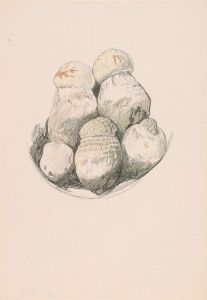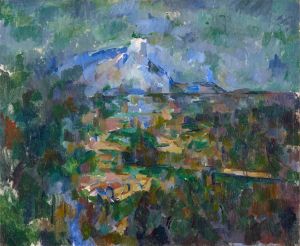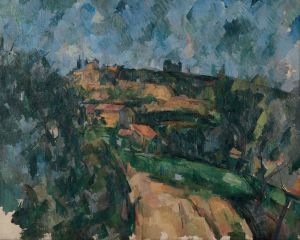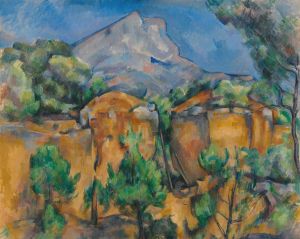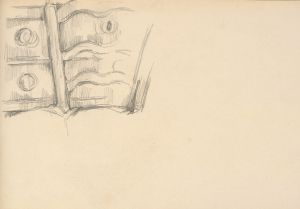
Study of a Rock
A hand-painted replica of Paul Cézanne’s masterpiece Study of a Rock, meticulously crafted by professional artists to capture the true essence of the original. Each piece is created with museum-quality canvas and rare mineral pigments, carefully painted by experienced artists with delicate brushstrokes and rich, layered colors to perfectly recreate the texture of the original artwork. Unlike machine-printed reproductions, this hand-painted version brings the painting to life, infused with the artist’s emotions and skill in every stroke. Whether for personal collection or home decoration, it instantly elevates the artistic atmosphere of any space.
Paul Cézanne's Study of a Rock is a lesser-known work by the French Post-Impressionist painter, who is widely regarded as a pivotal figure in the transition from 19th-century Impressionism to 20th-century modernism. This painting exemplifies Cézanne's deep interest in the natural world and his methodical approach to capturing the essence of his subjects through form, color, and structure.
The artwork focuses on a single rock formation, showcasing Cézanne's fascination with the geological features of the landscape. Throughout his career, Cézanne often painted scenes from nature, particularly the countryside of Provence, where he spent much of his life. His works frequently depicted Mont Sainte-Victoire, trees, and other natural elements, but Study of a Rock stands out for its singular focus on a solitary rock. This choice reflects Cézanne's dedication to studying the fundamental forms of nature and his belief that all natural objects could be reduced to geometric shapes such as spheres, cones, and cylinders.
In this painting, Cézanne employs his characteristic brushstrokes, layering colors and textures to create a sense of depth and solidity. The rock is rendered with a combination of earthy tones, including browns, grays, and greens, which evoke the ruggedness and permanence of the natural world. The surrounding environment is suggested rather than fully detailed, drawing the viewer's attention to the central subject. This approach aligns with Cézanne's broader artistic philosophy, which prioritized the underlying structure of objects over their superficial details.
Study of a Rock is believed to have been created during the later years of Cézanne's career, a period when he increasingly focused on the interplay between natural forms and the artist's perception of them. During this time, Cézanne's work became more abstract, laying the groundwork for movements such as Cubism and Fauvism. Artists like Pablo Picasso and Georges Braque later cited Cézanne as a major influence on their own explorations of form and perspective.
While Study of a Rock may not be as widely recognized as Cézanne's larger compositions or his still-life paintings, it is an important example of his dedication to understanding and representing the natural world. The painting reflects his belief that art should capture the enduring essence of its subject, rather than merely imitating its outward appearance. Today, Cézanne's works, including Study of a Rock, are celebrated for their innovative approach to form and their profound impact on the development of modern art.
Further details about the specific location of the painting or its current ownership are not widely documented.





